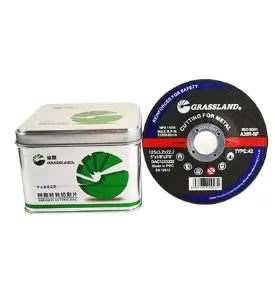In modern manufacturing, kinds of grinding machines and the corresponding types of grinding wheels used in grinding machines play a vital role in crafting high-quality components. From precision shaping to surface finishing, understanding the types and uses of grinding wheels can greatly enhance production efficiency. Here’s a breakdown of essential grinding machine types, wheel types, and best maintenance practices.

Types of Grinding Machines: An Overview
There are various kinds of grinding machines, each designed for specific types of work. Common machines include surface grinders for flat surfaces, cylindrical grinders for round objects, and centerless grinders that allow high-precision work without the need for clamping. Additionally, specialized machines like gear grinders and tool and cutter grinders are available for complex shapes and fine detail work. By selecting the right grinding machine, users ensure smoother finishes, greater accuracy, and prolonged tool life, improving production outcomes.
Different Types of Grinding Wheels Used in Grinding Machines
Selecting the types of grinding wheels used in grinding machines is critical for achieving desired results. Key wheel types include straight wheels for flat surfaces, cup wheels for finer finishes, and diamond wheels for extra hardness when dealing with abrasive or high-strength materials. Each grinding wheel type is designed to tackle specific materials and tasks, ensuring optimal results while minimizing wear and tear on the machine. With the right wheel choice, users can increase efficiency and precision across a variety of applications.
Uses of Grinding Wheel for Precision and Efficiency
The uses of grinding wheel in the manufacturing process are vast. Grinding wheels are essential for shaping metals, sharpening tools, and finishing surfaces. From heavy material removal to delicate finishing touches, each grinding wheel serves its unique purpose. In precision machining, for instance, grinding wheels create smooth finishes that meet high-quality standards. Whether used in large-scale industrial manufacturing or smaller specialized workshops, grinding wheels are a foundational tool that impacts overall productivity and quality.
Use and Maintenance of Grinding Wheels
Proper use and maintenance of grinding wheels is essential for both safety and functionality. Regular inspection is critical; wheels should be checked for cracks, worn surfaces, or irregularities. Routine cleaning removes material buildup and keeps the wheel in optimal condition. Equally important is wheel balancing and dressing, ensuring an even surface for efficient and smooth operations. Following proper maintenance procedures extends the life of the wheel and minimizes risks associated with wear, thereby safeguarding the operator and improving machine output.
Selecting the Right Grinding Machine and Wheel Combination
Understanding kinds of grinding machines and types of grinding wheels used in grinding machines is only the first step; matching the two is essential for achieving precise results. By pairing the right machine with the correct wheel type, users can maximize efficiency and reduce material wastage. Selecting combinations based on the material, desired finish, and production volume can enhance productivity and improve final product quality, which is essential in today’s competitive manufacturing environments.
For professionals in manufacturing, knowing the types of grinding wheels used in grinding machines and understanding the uses of grinding wheels enables them to optimize processes. With correct selection, careful maintenance, and safe practices, grinding wheels play a pivotal role in achieving high-precision, high-quality outcomes across various industrial applications.
Post time:Nov - 19 - 2024

















